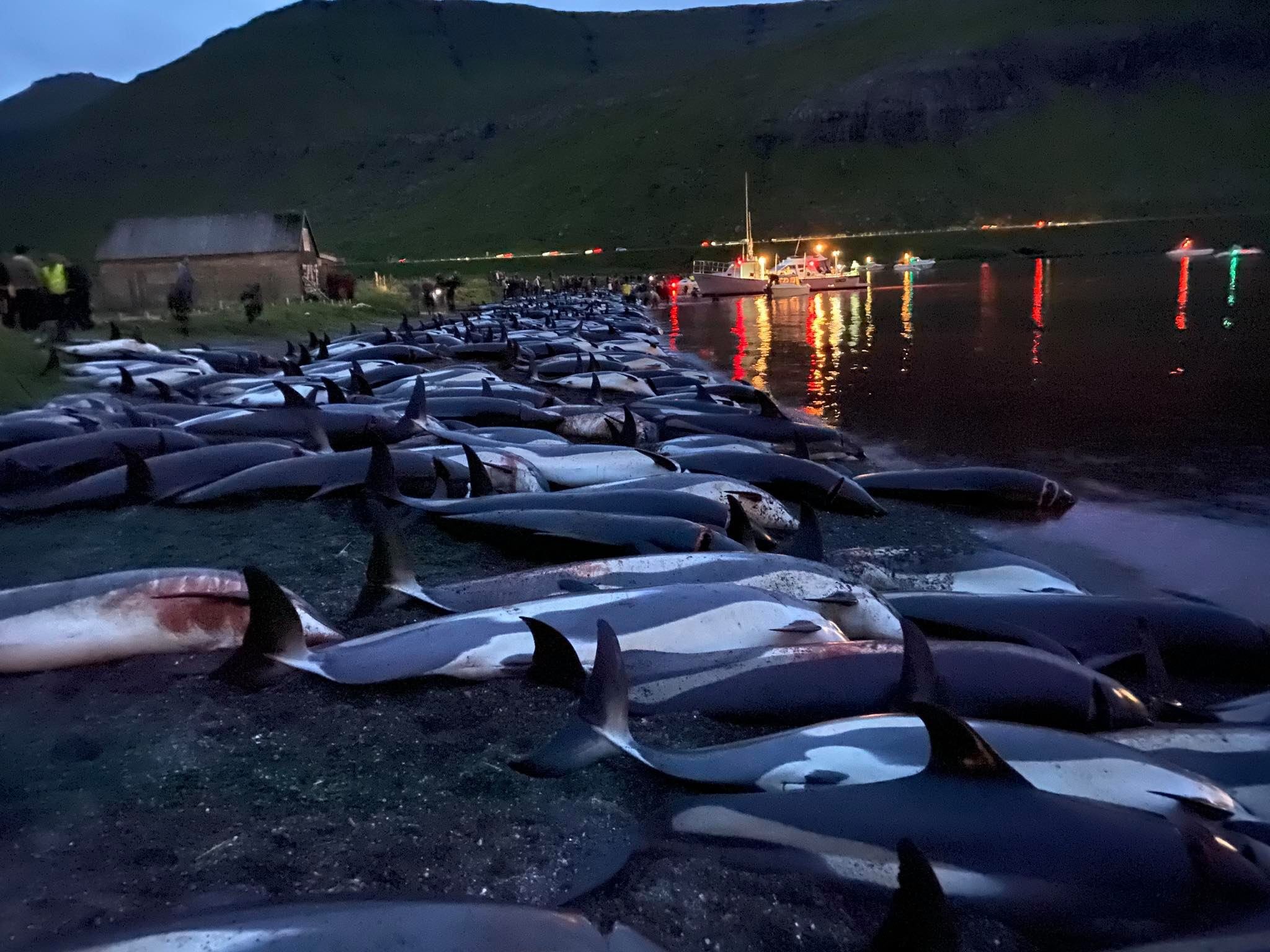
(CNN) – More than 1,400 dolphins were killed this Sunday night in the Danish Faroe Islands, in what hunters said was a traditional hunt.
The international marine conservation organization “Sea Shepherd” says in a statement that an overpopulation of 1428 white-faced Atlantic dolphins were cornered on Skálabotnur beach in the Faroe Islands on September 12, where they all died.
Images of the massacre show hunters halfway to the sea, which turned red, with dolphin carcasses piled up on the beach.
Traditional hunting, called “grindadrap,” generally involves long-finned pilot whaling and has been advocated by villagers, who say it is an important and sustainable food source, given the high populations of pilot whales.
But Sea Shepherd says dolphin meat was no longer popular to eat and was probably contaminated.
What do they do with dead dolphins
“Normally, the meat of a grindadrap is shared among the participants and the rest among the villagers of the district where the hunt is conducted. However, there is more dolphin meat from this hunt than anyone would want to take. So the dolphins are being offered to other districts in hopes of not having to throw them away, ”Sea Shepherd said in a statement.
Bjorg Jacobsen, of the Faroe Islands police, said the hunt had been legal, but declined to comment further.
Hunting was criticized even by those who are often in favor of whaling, and Kristian Petersen, 41, from the Faroese town of Fuglafjørður, said it was unacceptable.
“I’ve experienced it first hand and I’ve been involved a bit too. As long as it’s been just for food, I’ve supported it,” Petersen said.
However, he believes the recent hunt involved “so many mistakes”, including chasing “too large a herd” and prolonging the suffering of dolphins as “there weren’t enough people to do the killings on the beaches”.
“Given the times we are in, with a global pandemic and the world paralyzed, it is absolutely frightening to see an attack on the nature of this scale in the Faroe Islands,” said Captain Alex Cornelissen, executive director of Sea Shepherd Global. “If there’s one thing we’ve learned from this pandemic, it’s that we have to live in harmony with nature instead of ending it.”
A Faroese government spokesman, Páll Nolsøe, told CNN in a written statement that Faroese islanders catch an average of 250 white-faced dolphins a year, but added that the number “fluctuates greatly from ‘one year to another “.
“Capturing white-faced dolphins in the Faroe Islands is also considered sustainable, according to the latest abundance estimate,” Nolsøe said.
“The capture of 1,400 dolphins this Sunday 12 September in Skálafjørður was exceptionally large,” he added.
Dolphin hunting, questioned
“Pot heads and other small whales represent one of the few local sources of meat that should not be imported from afar. The meat from each whale harvest provides a large amount of valuable food, which is distributed free food to local communities where whale harvesting takes place.Food that would otherwise have to be imported from sources in other countries.The meat of the 1,400 dolphins caught this Sunday has also been distributed among participants in the capture and the local community, ”he continued.
“There is no doubt that the whaling of the Faroe Islands is a shocking spectacle for people who are not familiar with the hunting and killing of mammals. However, the hunts are fully regulated and organized,” he said. Nolsøe.
The Danish Ministry of Foreign Affairs told CNN in a written statement: “The Faroe Islands are an autonomous entity within the Kingdom of Denmark and the Faroese authorities have assumed legislative and administrative responsibility in a substantial number of fields. , including the management of natural resources in relation to marine mammals “.
The Faroe Islands are a semi-autonomous region, covered by the external sovereignty of Denmark. They are halfway between Scotland and Iceland.
Allegra Goodwin and Jeevas Ravindran participated in this report